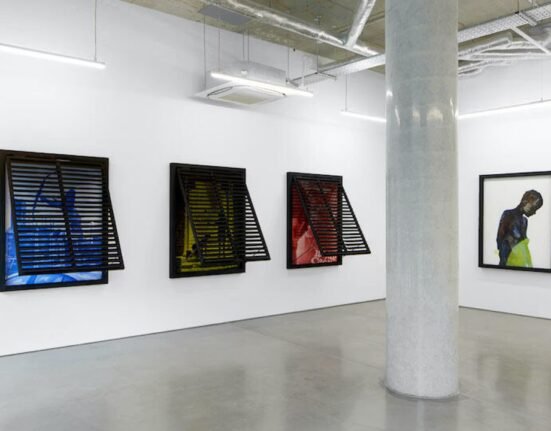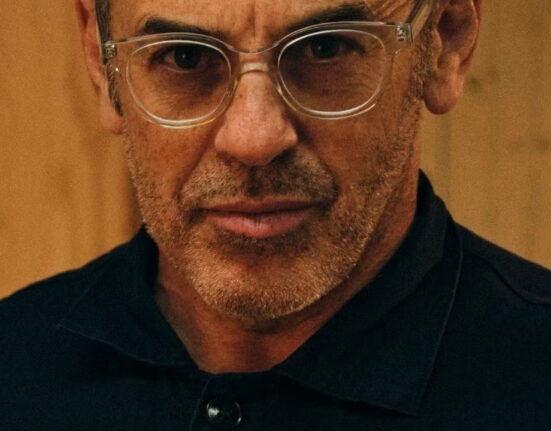Across London, New York, and Paris this month some of the greatest treasures on earth will be bought and sold in unruffled, measured tones. Autumn marks auctions in the art world and a chance for many to add a prized asset to their collections.
However, while purchases may pull at the heartstrings of their new owners, many buyers will also be making their offers with a calculated financial bet in mind.
Despite the finance world being dominated with talk of stocks, shares, equity, and more—art could prove to be the dark horse of portfolio assets for the ultrawealthy.
The mysterious industry—oftentimes of closed auction rooms and anonymous bidders ringing in over the phone—is increasingly catching the attention of a new breed of buyer, one that isn’t afraid to share their purchase on Instagram.
Millennial buyers are flooding the market thick and fast, along with Gen Z dubbed the new “driving force” in the market. In 2020 millennials were the highest spenders, with a median expenditure of $228,000.
Indeed younger buyers are also spending more than their older counterparts, with 30% of millennials spending more than $1 million versus 17% of boomers.
And if history is anything to go by, this new generation of collectors won’t be let down by their investment, with many art indexes claiming to chart huge returns ahead of traditional financial assets.
So at a time when even some of the brightest minds on Wall Street are worrying about the stability of the market, is it time for investors—new or experienced—to think a little more creatively about what their portfolio looks like?
Does art outperform the S&P 500?
Stakeholders in the art world widely claim art has outperformed the S&P 500 in recent years.
The Fine Art Group, a global advisory and art finance firm, boasts a rate of return of 14% on its assets compared to the S&P 500, which has an annualized rate of return of 11.88%.
Lyon-based Artprice.com’s research yielded similar results. Its hypothetical Artprice100 index—the 100 best-performing artists at auction—compared to the S&P 500, shows fine art faring twice as well as Wall Street in 2023.
Perhaps the most comprehensive review of the industry is Art Basel and UBS’s Global Art Market report, penned yearly by Clare McAndrew, Ph.D.
The 2023 report, released in April detailing sales from the year prior, shows global art sales increased by 3% in 2022 to an estimated $67.8 billion, with volumes similarly increasing.
The report also suggests that art swiftly bounces back in times of economic uncertainty, explaining: “The fallout from the global financial crisis affected nearly all segments of the market, including the high end. The market bounced back strongly in 2010, with a booming Chinese market and strong sales in the U.S. operating in unison to push values up by 44% to $64.6 billion by 2011.”
A boon for the “happy few”
Yet unfortunately for those not in the know, the opportunity art offers has traditionally been traded behind closed doors.
According to Giovanna Bertazzoni, vice chairman of the 20th- and 21st-century art department at historic auction house Christie’s, the industry has historically been built in an undemocratic way.
“For ages this has been a white, male-dominated world—and very Eurocentric. Professional dealers in auction houses for years and years were preserving this kind of knowledge only for the happy few,” Bertazzoni said.
However, change is afoot—something Christie’s, which enjoyed record-breaking global sales of $8.4 billion in 2022—has been keen to embrace.
As in many industries, the pandemic marked a shift to the online world, thus opening up the process to people who may never have set foot in a gallery. More than half the lots sold in Q1 2023 by Christie’s were purchased online—up from 20% in 2019.
Many of these new buyers are millennials, brought into the dazzling art world through contemporary artists, before falling in love with older, historic pieces.
“They see how exciting a tribe this is, and they want to be part of that lifestyle,” Bertazzoni tells Fortune. “That lifestyle now, undeniably, involved with being converse and with buying art—it’s not only about luxury goods, a fast life, hopping from city to city, it’s about understanding contemporary art and surrounding oneself with contemporary art.”
The art industry is also drawing further attention courtesy of famous faces: Twilight star Robert Pattinson has curated collections, Oprah Winfrey has cochaired auctions, and the Kardashians attended Art Basel last year, while pieces by sculptor James Turrell have gone viral after being bought by supermodel Kendall Jenner.
Remembering Wall Street lessons
Although data may paint a seemingly pretty picture for investors, financial experts warn that all industries should be viewed with the same caution: Past performance is no indicator of future performance.
Matthew Vamvakis, managing director and senior banker at J.P. Morgan Private Bank, urged would-be buyers to apply lessons learned from the wider investment landscape to their “passion assets”: “We too often find that people are late to think of their passion assets in the same vein as their more traditional assets, and therefore also underappreciate the opportunity to apply similar wealth management and planning rigor to their passion assets.”
He told Fortune he also wondered whether a potential influx of “dispassionate” investors might push down the ROIs seen by long-term buyers: “While diversification is a tried-and-true tenet of quality portfolio management, I would not suggest diversifying into a passion category without having your own, well, passion for it.
“With true passion should come a higher level of understanding and even expertise. Even then, and especially in the early innings, you may benefit from professional assistance.”
And while Wall Street might have been gamified with trading apps, art investors looking to make a speedy return may be disappointed.
Bertazzoni added she rarely encounters buyers trying to make a “quick buck,” adding that although financial considerations are often discussed, the priority of investors is adding a “missing” piece to their beloved collections.
Different time periods also accumulate value at different paces, Bertazzoni explained. Contemporary art, for example, tends to increase in value more quickly but is exposed to the whims of what the artist does next, and which galleries they exhibit at.
For pieces created between the 1850s and 1950s, generally a period of five years is needed to see the fruits of the investment, Bertazzoni said, though cautioned that these come with their own set of constraints: provenance, storage, authenticity, and even who else has also owned the piece.
Making art accessible
One business seeking to make the sector more accessible is LiveArt, a trading platform and price database where individuals can also buy and sell art.
Research by the site’s team confirmed to Fortune that its data also supports the theory that art—particularly more recent pieces—is outperforming stocks.
A spokeswoman said: “Between 1995 and 2022, contemporary art has appreciated at a compound annual growth rate of 12.6%, outperforming the S&P 500. S&P total returns for the same time period have been 9%.”
LiveArt cofounder Adam Chinn hopes to move the dial in the supply-driven sector by giving artists an easier route to market, thus giving more people the chance to get their hands on pieces.
Across the price spectrum, Chinn is seeing a shift, saying building an art collection is slowly drifting down the income ladder: “Back in the ’70s or ’80s you could be a reasonably wealthy person and not have any art on your wall. Now that’s just not the case.
“If you look at the big buyers over the last 10, 15, 20 years, they’ve been people who’ve made their money—hedge fund guys, private equity guys. It has changed culturally [but it] is still a long way behind the other markets in terms of its development—it changes very incrementally.”






